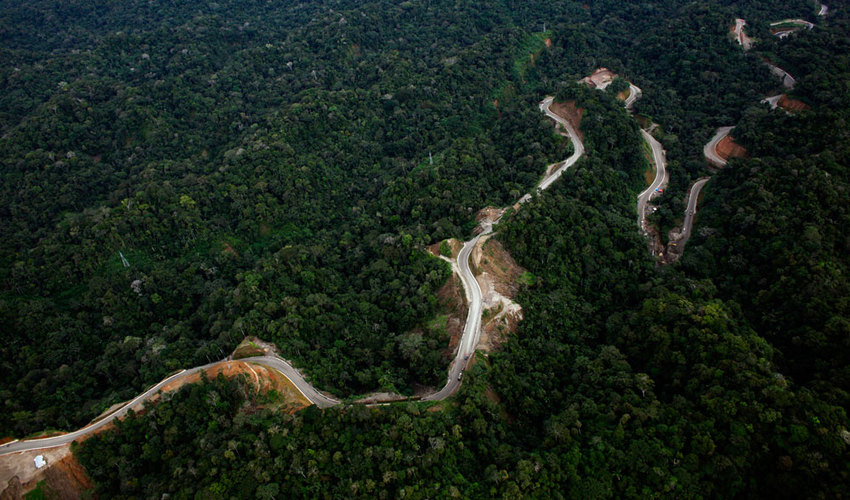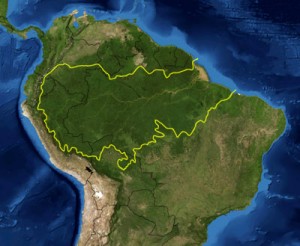Research Papers
Portrayal of the Proposed Pucallpa, Peru – Cruzeiro do Sul, Brazil Transportation Corridor in the Media
Abstract: The proposed Pucallpa, Peru-Cruzeiro do Sul, Brazil transportation corridor promises economic benefits, but also threatens biodiversity as well as indigenous peoples. As the media plays an influential role in shaping public opinion, this paper examines how the Peruvian media portrays this controversial topic. The study uses a media studies and political ecology perspective to provide an exploratory assessment of the media coverage. I examine various online media sources including newspapers, organization and government websites to determine the underlying economic, environmental, and social points of view. Through analysis of keyword occurrence, results show that while publications on the issue are limited, the Peruvian media stresses the corridor’s economic benefits over the environmental impacts.
Keywords: Pucallpa, Cruzeiro do Sul, media studies, political ecology, development, transportation
Mitigating confusion: taxonomy of road subtypes and cultural and environmental impacts in the Amazon
Abstract: This paper recognizes, analyzes, and proposes an organizational framework for the inconsistent road terminology present in current literature on road building in the Amazon. The epistemological methods of First-Order Logic and the Q-Method along with a political ecology framework coalesce to form a working typology of roads and their impacts in the Amazon region. Following this, three case studies focus on the socio-environmental impacts of the typology’s subtypes.
Keywords: Roads, Amazon, Transportation, road ecology, impacts, epistemology
IIRSA and Energy Connectivity in the Amazon: Can infrastructure solve energy poverty in the region?
Abstract: Dams function as a major source of electricity for Brazil, and are also vital parts of energy systems in other Amazonian countries. Governments and infrastructure groups, such as the Initiative for the Regional Integration of South America (IIRSA), have planned to build more dams and expand development to improve transport, energy, and communications across the continent. This paper explores these infrastructure goals and focuses on the challenge of energy poverty in rural areas of the Brazilian Amazon. Results consider the socio-ecological scope of current IIRSA projects, the benefits and challenges of rural electrification, and a hypothetical model that compares electricity access to human development components.
Keywords: IIRSA, Brazil, dams, energy, human rights, infrastructure
The Geopolitics of the Brazil’s Amazonian Border
Abstract: This thesis takes an in depth look at the geopolitical drivers behind Brazilian military policy and development along the Amazonian border. Background on past Brazilian policies and interests along the border combined with current regional initiatives help ground this thesis’s argument that reduced border development and stronger engagement with international concerns are better for all parties involved. Interests explored include border tensions, impacts of Brazil’s western military philosophy, past regional initiatives and the ecological impacts of roads in the tropics. The frameworks of Political Ecology and Military Science are combined to provide a unique lens through which to analyze current borderland dynamics.
Keywords: development, geopolitics, military science, security, roads, borders
Other information:
Our reading comes from the academic journal, Regional Environmental Change. It is titled “Regional Integration and Local Change: Road Paving, Community Connectivity, and Social–ecological Resilience in a Tri-national Frontier, Southwestern Amazonia.” Its citation information is below. This article highlights social-ecological resilience in the MAP southwestern region of the Amazon. This tri-national frontier stands for Madre de Dios (Peru), Acre (Brazil), and Pando (Bolivia), three states that comprise the construction zone of the Inter-Oceanic Highway. The study analyzes collective memory, livelihood diversity, and adaptative capacity to assess connectivity and resilience.
Perz, Stephen, Liliana Cabrera, Lucas Carvalho, Jorge Castillo, Rosmery Chacacanta, Rosa Cossio, Yeni Solano, Jeffrey Hoelle, Leonar Perales, and Israel Puerta. “Regional Integration and Local Change: Road Paving, Community Connectivity, and Social–ecological Resilience in a Tri-national Frontier, Southwestern Amazonia.” Regional Environmental Change 12.1 (2011): 35-53. Print.
______
Brazil’s Belo Monte Dam, a $14 billion project
Above is a slideshow that shows recent (Jan. 2012) construction of Brazil’s Belo Monte hydroelectric dam, along the Xingu River. This project faced major opposition from environmentalists and indigenous leaders. Belo Monte will displace an estimated 20,000 to 40,000 people from their homes in the Amazon within the state of Pará. This is one of the major infrastructure pushes backed by the Initiative for the Integration of Regional Infrastructure (IIRSA) — see a full list here.
Dams are notorious for their ecological impacts, including deforestation, ecological destruction, indigenous displacement, methane pollution, and so on. But consider its benefits. The Belo Monte is estimated to produce 11,181 MW, enough power to about 6,000 homes. Infrastructure and connectivity advances are necessary to addressing social inequality for the energy poor, especially in developing regions such as Brazil. But are projects like the Belo Monte the wrong approach?
______
Amazon Road, a controversial topic
The series “Traveling Down The Amazon Road” produced by National Public Radio correspondent Lourdes Garcia-Navarro and staff photographer John Poole follows the path of the Inter-Oceanic Highway connecting Peru’s Atlantic coast to Brazil’s Pacific ports. While the road has a great potential to launch economic expansion, the damage it will cause on the environment is inevitable making the construction project extremely controversial.

John Poole/NPR
Take a look at the four different segments: ‘The Road,’ ‘The Gold Rush,’ ‘The Bounty,’ and ‘The Rainforest’ and travel along with Garcia-Navarro and Poole by selecting ‘view photos and hear story’ and then pressing the play button on the lower right-hand corner of the screen where it says ‘Listen’ to hear the informative reports by Garcia-Navarro.

